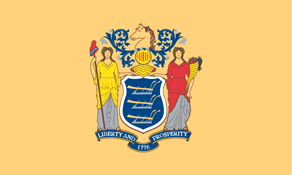New Jersey State Standards for Arts Education: Kindergarten

Currently Perma-Bound only has suggested titles for grades K-8 in the Science and Social Studies areas. We are working on expanding this.
NJ.1.1. (Aesthetics) All students will use Aesthetic knowledge in the creation of and in response to Dance, Music, Theater, and Visual Art.
A.1. Knowledge: Observe the four art forms of dance, music, theater, and visual art.
A.2. Knowledge: Explain that dance, music, theater and visual art can generate personal feelings.
A.3. Knowledge: Interpret basic elements of style in dance, music, theater, and visual art as the foundation for a creative project.
B.1. Skills: Communicate observational and emotional responses to works of art from a variety of social and historical contexts.
B.2. Skills: Provide an initial response when exposed to an unknown artwork.
B.3. Skills: Use imagination to create a story based on an arts experience in each of the art forms.
NJ.1.2. (Creation and Performance) All students will utilize those skills, media, methods, and technologies appropriate to each art form in the creation, performance, and presentation of Dance, Music, Theater, and Visual Art.
A.1. Dance: Perform planned and improvised dance sequences using the elements of time, space/shape, and energy.
A.2. Dance: Communicate through the creation and performance of planned and improvised sequences in response to meter, rhythm, and variations in tempo.
A.3. Dance: Create and perform using objects and other art forms as creative stimuli for dance.
A.4. Dance: Perform such movements as bending, twisting, stretching, and swinging using various levels in space.
B.1. Music: Clap, sing or play from simple notation that includes pitch, rhythm, dynamics, and tempo.
B.2. Music: Vocalize the 'home tone' of familiar and unfamiliar songs, and demonstrate appropriate posture and breathing technique while performing songs, rounds, or canons in unison with a partner.
B.3. Music: Improvise short tonal and rhythmic patterns.
C.1. Theater: Portray characters and describe basic plots and themes in creative drama.
C.2. Theater: Experiment with the use of voice and movement in creative drama and storytelling.
C.3. Theater: Employ theatrical elements to create and express stories in various cultural settings.
C.4. Theater: Show how different uses of and approaches to theater can communicate experiences.
D.1. Visual Art: Create works of art using the basic elements of color, line, shape, form, texture, and space for a variety of subjects and basic media.
D.2. Visual Art: Cite basic visual art vocabulary used to describe works of art.
D.3. Visual Art: Present completed works of art in exhibition areas inside and outside the classroom.
D.4. Visual Art: Recognize how art is part of everyday life.
NJ.1.3. (Elements and Principles) All students will demonstrate an understanding of the elements and principles of Dance, Music, Theater, and Visual Art.
A.1. Dance: Identify the basic dance elements of time, space/shape, and energy in planned and improvised dance sequences.
A.2. Dance: Identify movement qualities such as jagged, sharp, smooth, bouncy, or jerky using the vocabulary of dance.
A.3. Dance: Explore arts media and themes as catalysts in the composition of dance.
A.4. Dance: Explore personal space.
B.1. Music: Identify musical elements in response to diverse aural prompts, such as rhythm, timbre, dynamics, form, and melody.
B.2. Music: Recognize ways to organize musical elements such as scales and rhythmic patterns.
C.1. Theater: Identify basic elements of theater such as setting, costumes, plots, scenes, and themes.
C.2. Theater: Explore the use of voice, movement, and facial expression in conveying emotions in creative drama and storytelling.
D.1. Visual Art: Identify the basic art elements of color, line, shape, form, texture, and space.
D.2. Visual Art: Discuss how art elements are used in specific works of art.
NJ.1.4. (Critique) All students will develop, apply and reflect upon knowledge of the process of critique.
A.1. Knowledge: Explain that critique is a positive tool.
A.2. Knowledge: Define the basic concepts of color, line, shape, form, texture, space, and rhythm.
B.1. Skills: Orally communicate opinion regarding dance, music, theater, and visual art based on observation.
B.2. Skills: Express how individuals can have different opinions toward works of art.
NJ.1.5. (History/Culture) All students will understand and analyze the role, development, and continuing influence of the arts in relation to world cultures, history, and society.
A.1. Knowledge: Recognize works of art from diverse cultures.
B.1. Skills: Identify family and community as themes in art.